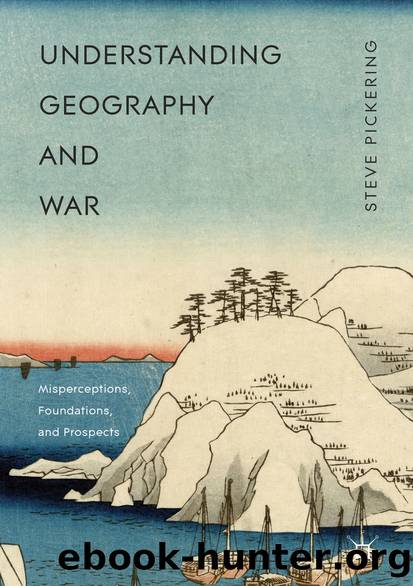Understanding Geography and War by Steve Pickering

Author:Steve Pickering
Language: eng
Format: epub
Publisher: Palgrave Macmillan US, New York
Reader’s Digest
One of the earliest attempts to move away from the elite focus was the analysis of the Reader’s Digest in Sharp (1993). In a sense, so much has changed in the world since the publication of this piece. Yet Sharp (1993) remains a model of how to do a structured, empirical analysis of popular geopolitics and serves as a reminder to us that we need to apply such methods now that social media have arrived.
Sharp (1993) was very conscious of the fact that critical geopolitics had been depending on elite texts; the belief had been that these were the fonts of wisdom, and that popular media would naturally follow their lead; accordingly, we only needed to read the texts at the source, rather than the second-hand stuff. Sharp (1993) disagreed: ‘an over-concentration on the understandings of elites tends to collapse the sociology of knowledge production into the internal dynamics of the geopolitical text. Geopolitics does not simply “trickle down” from elite texts to popular ones. It is thus not sufficient only to interpret elite texts’ (Sharp 1993, 493). This allowed her to develop the notion of ‘Geopolitics and you: popular participation in the creation of a geopolitical enemy’ (Sharp 1993, 495).
For the actual analysis, Sharp (1993) looked at all articles in the period 1980–1990 (the ‘second Cold War’) referring to the Soviet Union. Of the 89 articles in that period, only one was sympathetic to the Soviet Union, and that was a piece on the December 1988 Armenian earthquake. In the other 88 articles, she found ‘there is a constant set of themes running through all Soviet stories–whether ethnographic, sociological, religious and so on–which provide a consistent characterisation allowing the credible creation of a Soviet geopolitics by the Digest. Thus every representation of the USSR is a political action. It fits into the discursive structuring of the USA and USSR as polar opposites: a structure centered upon irresolvable difference’ (Sharp 1993, 501).
Download
This site does not store any files on its server. We only index and link to content provided by other sites. Please contact the content providers to delete copyright contents if any and email us, we'll remove relevant links or contents immediately.
| Arms Control | Diplomacy |
| Security | Trades & Tariffs |
| Treaties | African |
| Asian | Australian & Oceanian |
| Canadian | Caribbean & Latin American |
| European | Middle Eastern |
| Russian & Former Soviet Union |
The Secret History by Donna Tartt(16608)
The Social Justice Warrior Handbook by Lisa De Pasquale(11485)
Thirteen Reasons Why by Jay Asher(7782)
This Is How You Lose Her by Junot Diaz(5753)
Weapons of Math Destruction by Cathy O'Neil(5029)
Zero to One by Peter Thiel(4817)
The Myth of the Strong Leader by Archie Brown(4785)
Promise Me, Dad by Joe Biden(4440)
Stone's Rules by Roger Stone(4412)
Beartown by Fredrik Backman(4403)
How Democracies Die by Steven Levitsky & Daniel Ziblatt(4392)
The Fire Next Time by James Baldwin(4336)
100 Deadly Skills by Clint Emerson(4070)
A Higher Loyalty: Truth, Lies, and Leadership by James Comey(4024)
Rise and Kill First by Ronen Bergman(4008)
The David Icke Guide to the Global Conspiracy (and how to end it) by David Icke(3875)
The Farm by Tom Rob Smith(3869)
Secrecy World by Jake Bernstein(3773)
The Doomsday Machine by Daniel Ellsberg(3725)
